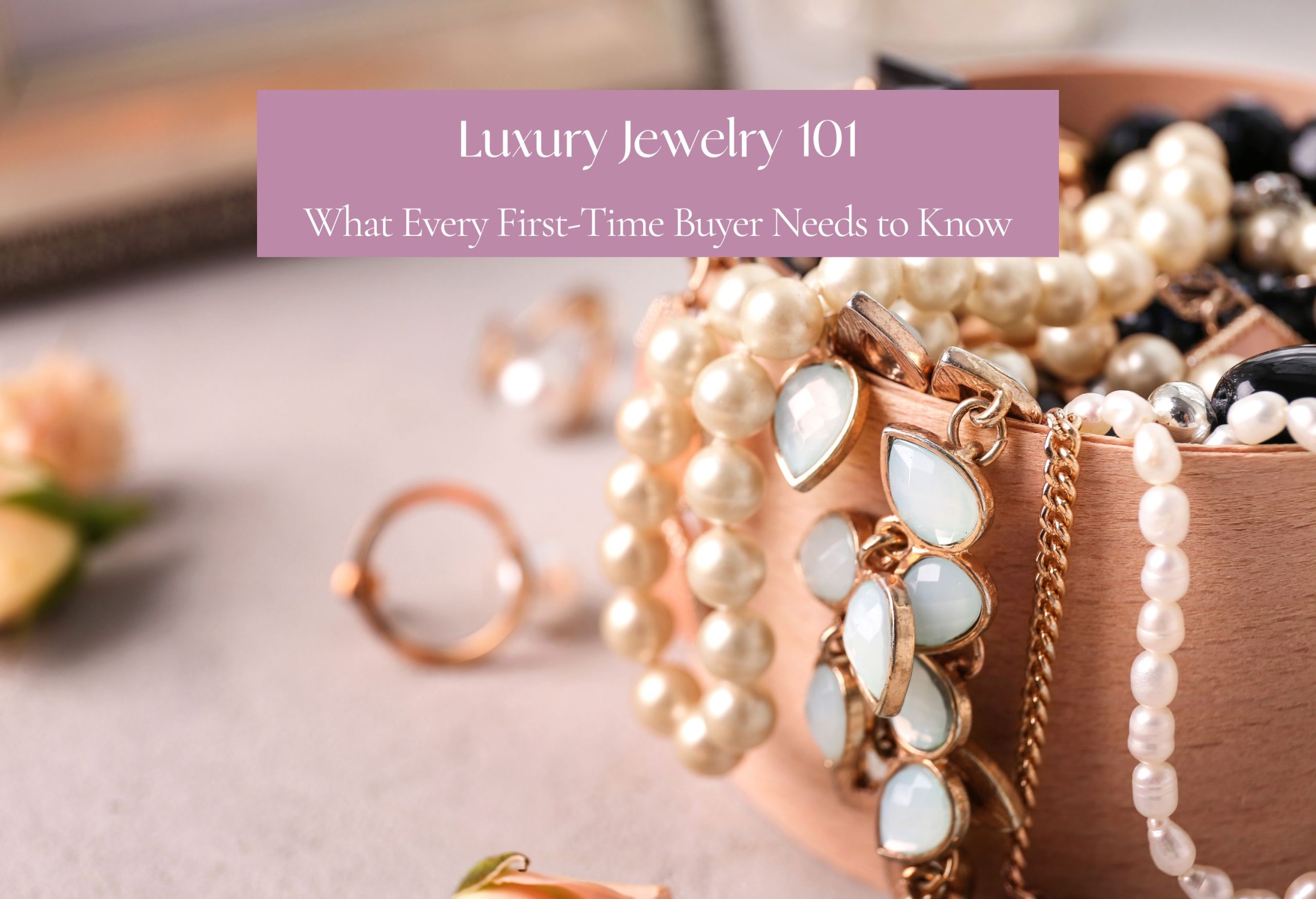
Luxury Jewelry 101: What Every First-Time Buyer Needs to Know
Luxury jewelry is more than just an accessory; it’s an investment, a statement, and often a symbol of something significant, such as a milestone or personal achievement. Whether you’re buying a stunning engagement ring, a timeless watch, or a dazzling bracelet, navigating the world of high-end fine jewelry for the first time can be overwhelming. But don’t worry! This guide will help you understand the basics and ensure you make an informed, confident purchase.
1. Understand What Makes Jewelry ‘Luxury’
Luxury jewelry is defined by its craftsmanship, materials, and exclusivity. Unlike mass-produced pieces, luxury jewelry is typically made from precious metals (such as platinum, 18k gold, or silver) and stones (diamonds, sapphires, emeralds, rubies, etc.). The design and artistry are also key factors — luxury pieces are often unique, bespoke, or limited edition.
When you buy luxury jewelry, you’re not just paying for the materials but also the skill and creativity that go into each piece. Think of it as owning a work of art — something rare and carefully made to last a lifetime.
2. Set a Budget — But Be Flexible
Luxury jewelry can be a significant investment, but it’s essential to set a budget before you start shopping. Keep in mind that luxury doesn’t always mean expensive. There are options in various price ranges, and with jewelry, quality often prevails over quantity.
Start by understanding what you’re willing to spend. For example, if you’re looking for an engagement ring, the classic “two months’ salary” rule is outdated. Instead, focus on what makes sense for you. It’s always wise to go for quality over quantity, ensuring you’re investing in a piece that will hold its value over time.
3. Know the 4 Cs of Diamonds
If you’re considering purchasing a diamond for the first time, familiarize yourself with the 4 Cs — Cut, Clarity, Carat, and Color. These factors significantly impact the appearance and price of the diamond.
- Cut: Refers to how well the diamond is shaped. A well-cut diamond will reflect light beautifully and exhibit more sparkle.
- Clarity: Indicates how flawless a diamond is. The fewer inclusions, the higher the clarity grade.
- Carat: Measures the weight of the diamond. Larger diamonds tend to be more expensive, but carat weight isn’t everything — quality matters.
- Color: Diamonds range from colorless to light yellow. The less color a diamond has, the more valuable it is.
Make sure you get the diamond certified by a reputable gemological laboratory, such as the GIA (Gemological Institute of America), to verify its authenticity and quality.
4. Choose the Right Metal
The metal used in luxury jewelry affects both its aesthetic and longevity. Here are the most common options:
- Platinum: Known for its durability and pure white appearance, platinum is a timeless choice for engagement rings or luxury diamond rings and high-end pieces.
- Gold: Available in different colors — yellow, white, and rose gold — each offering a unique look. Yellow gold is classic and warm, while white gold and rose gold are trendy and versatile.
- Silver: While not as valuable as gold or platinum, sterling silver can still be a luxury material when crafted well.
- Palladium: A rare metal that’s similar to platinum but more affordable. It has a naturally white finish and is durable.
When buying luxury jewelry, always ensure the metal is of high quality. For example, 18k gold is a popular choice for its balance of purity and strength.
5. Research the Brand
Brands play a huge role in the luxury jewelry market. Iconic designers like Cartier, Tiffany & Co., and Van Cleef & Arpels are not only known for their craftsmanship but also their reputation and legacy. Jewelry from these brands often retains value over time and can even appreciate. That said, don’t overlook smaller, independent designers who may offer unique, high-quality pieces. Research the brand’s history, craftsmanship, and customer reviews to get a sense of the jewelry’s overall quality and value.
6. Consider Customization for a Personal Touch
If you want something truly one-of-a-kind, many luxury jewelers offer customization options. Whether it’s choosing a specific gemstone, engraving a meaningful message, or designing an entirely unique piece of diamond necklace and pendants, custom jewelry can make your purchase even more special.
Custom jewelry allows you to create a piece that aligns perfectly with your personal style and story, making it a lasting treasure.
7. Think About Resale Value
While buying luxury jewelry should be about more than just resale, it’s important to consider the potential value of your piece over time. High-quality, iconic pieces from renowned brands tend to hold or increase in value. If you’re buying a piece as an investment, research the brand’s track record and its pieces’ history in the resale market.
Some jewelry, like diamonds or vintage pieces, may even appreciate over time, making it a worthwhile long-term investment.
Conclusion:
Buying luxury jewelry for the first time is an exciting journey, whether you’re purchasing a statement necklace, an engagement ring, or a treasured heirloom piece. By understanding what makes a piece “luxury,” setting a budget, and choosing the right materials and brand, you’ll be well-equipped to make a purchase that not only delights you now but also stands the test of time. Remember, luxury jewelry isn’t just about the price tag — it’s about the beauty, craftsmanship, and personal meaning it holds for you.
